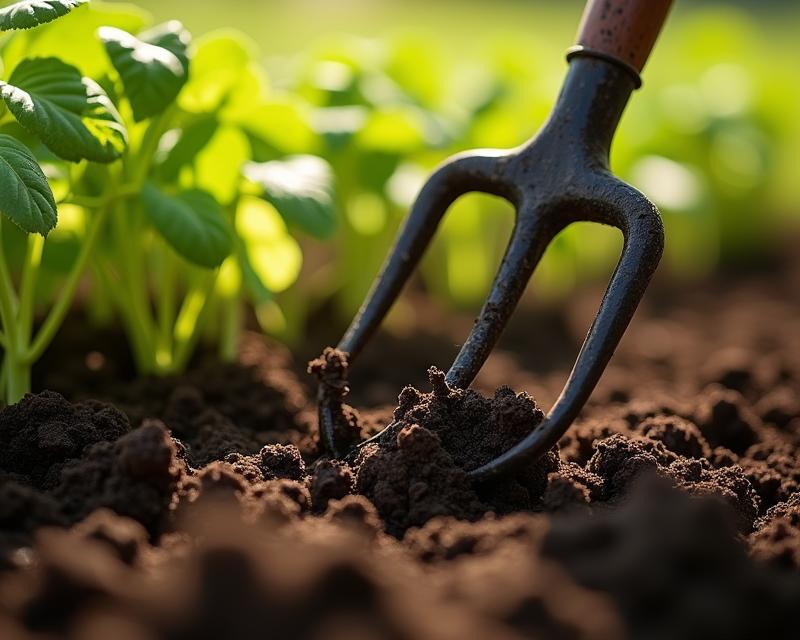Healthy Soil, Happy Veggies!
Publish in Crops el 04/07/2025 16:03
Healthy Soil, Happy Veggies!
Good soil is the foundation of any successful garden or farm. It's more than just dirt; it's a complex ecosystem teeming with life that nourishes your plants. Before you even think about planting those seeds or seedlings, taking the time to prepare your soil properly is crucial for a bountiful harvest. This guide will walk you through the basics of soil testing and amendment, setting your vegetables up for success.

Understanding Your Soil: The pH Factor
One of the first things you need to know about your soil is its pH level. pH measures how acidic or alkaline your soil is, on a scale of 0 to 14, with 7 being neutral. Most vegetables prefer a slightly acidic pH between 6.0 and 7.0. You can easily test your soil pH using a home testing kit available at most garden centers. These kits are affordable and provide a quick estimate. For a more accurate reading, consider sending a soil sample to your local agricultural extension office. They offer comprehensive soil testing services.
Nutrient Needs: Amending for Growth
Even with the right pH, your soil might be lacking essential nutrients. Think of nutrients like food for your plants. Common nutrients vegetables need include nitrogen (N), phosphorus (P), and potassium (K). A soil test will tell you exactly what your soil is deficient in. Based on the results, you can amend your soil with organic matter like compost, aged manure, or cover crops. Compost is a fantastic all-around amendment, improving soil structure, water retention, and nutrient availability. Aged manure adds nutrients and organic matter, but be sure it's properly aged to avoid burning your plants. Cover crops, like clover or rye, can be planted and then tilled into the soil to improve fertility and soil health.
Preparing the Soil: Tilling and Incorporating
Once you've determined your soil's pH and nutrient needs, it's time to prepare the soil for planting. Loosen the soil to a depth of at least 12 inches using a tiller or shovel. This improves drainage and allows roots to penetrate easily. Incorporate your chosen amendments thoroughly into the soil. Spread compost or manure evenly over the garden bed and then till it in. Avoid over-tilling, as this can damage soil structure. A well-prepared soil will be loose, crumbly, and dark in color. It should hold its shape when squeezed but crumble easily when touched.
Long-Term Soil Health
Soil preparation isn't a one-time task. Maintaining healthy soil is an ongoing process. Regularly adding organic matter, avoiding excessive tilling, and using cover crops will help keep your soil fertile and productive for years to come. By investing in your soil, you're investing in the success of your garden or farm. Happy soil equals happy plants, and happy plants equal a delicious harvest!





